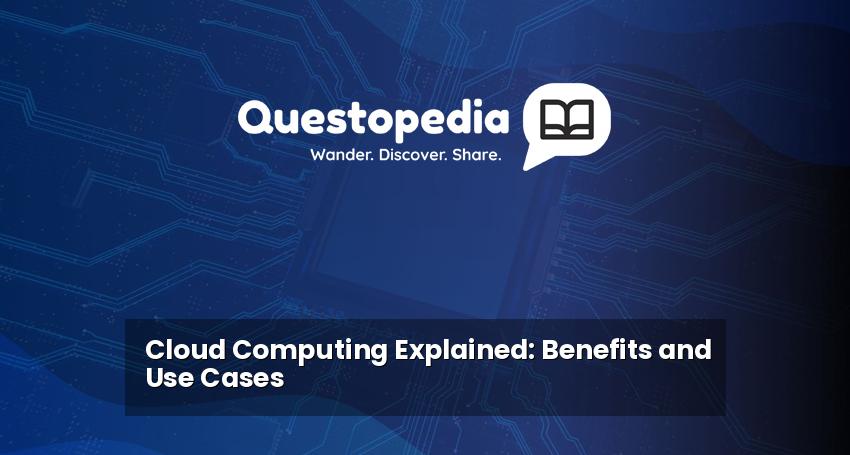Cloud Computing Explained: Benefits and Use Cases
Have you heard the term “cloud computing” and felt a little lost? Don’t worry, you’re not alone! It might sound complex, but the core idea is quite simple. This blog will break down cloud computing into easy-to-understand terms, explore its major benefits, and show you real-world examples of how it’s used every day.
What is Cloud Computing? (The Short & Sweet Version)
Imagine instead of storing all your files and programs directly on your computer’s hard drive, you store them on a giant network of computers owned by someone else. That’s essentially what cloud computing is. Instead of running applications on your own device, you access them and the data they use over the internet.
Think of it like renting storage space instead of buying it. You only pay for the space and resources you need, and you can easily scale up or down depending on your needs. This “network of computers” providing these services is often referred to as “the cloud.”
Types of Cloud Computing Services
The cloud computing landscape offers different service models to cater to various needs. Here are the three main types:
- Infrastructure as a Service (IaaS): This provides the basic building blocks for cloud IT. You get access to things like servers, storage, and networks. Think of it as renting a plot of land and building your own house. You have complete control, but you’re also responsible for managing everything.
- Platform as a Service (PaaS): This gives you a platform to develop, run, and manage applications without worrying about the underlying infrastructure. It’s like renting an apartment – you don’t have to worry about the plumbing or the roof, just decorating and furnishing.
- Software as a Service (SaaS): This delivers software applications over the internet, on demand. You simply use the software, without worrying about installing or managing anything. Think of it as subscribing to a streaming service – you just watch the content.
Benefits of Cloud Computing
Why are so many businesses and individuals moving to the cloud? Here are some key advantages:
- Cost Savings: One of the biggest benefits of cloud computing is reduced costs. You don’t need to invest in expensive hardware or IT infrastructure. You only pay for the resources you use.
- Scalability: Easily scale your resources up or down to meet changing demands. This is crucial for businesses that experience seasonal spikes in traffic or need to adapt quickly to new opportunities.
- Accessibility: Access your data and applications from anywhere with an internet connection. This promotes collaboration and remote work.
- Reliability: Cloud providers invest heavily in robust infrastructure and redundancy. This ensures high availability and minimal downtime.
- Security: Cloud providers offer advanced security features to protect your data. They often have better security than smaller businesses can afford to implement on their own.
- Automatic Updates: You don’t have to worry about installing updates or patches. The cloud provider handles all of that for you.
- Disaster Recovery: Cloud computing makes disaster recovery much easier. Your data is stored in multiple locations, so if one location fails, your data is still safe.
Real-World Use Cases of Cloud Computing
Cloud computing is used in a wide variety of industries and applications. Here are a few examples:
- File Storage and Sharing: Services like Google Drive, Dropbox, and OneDrive allow you to store and share files securely in the cloud.
- Streaming Services: Netflix, Spotify, and Hulu all rely on the cloud to stream movies, music, and TV shows to millions of users.
- Social Media: Social media platforms like Facebook and Twitter use the cloud to store and manage massive amounts of data.
- E-commerce: Online retailers like Amazon use the cloud to power their websites, manage inventory, and process orders.
- Software Development: Developers use cloud-based tools to build, test, and deploy applications.
- Healthcare: Healthcare providers use the cloud to store and manage patient records securely.
- Big Data Analytics: Businesses use the cloud to analyze large datasets and gain valuable insights.
Conclusion: The Future is in the Cloud
Cloud computing is revolutionizing the way businesses and individuals use technology. Its flexibility, scalability, and cost-effectiveness make it an attractive option for a wide range of applications. As technology continues to evolve, cloud computing will only become more important. Understanding the basics of cloud computing is essential for anyone looking to stay ahead in today’s digital world. We hope this article has demystified the cloud and given you a better understanding of its benefits and use cases.






